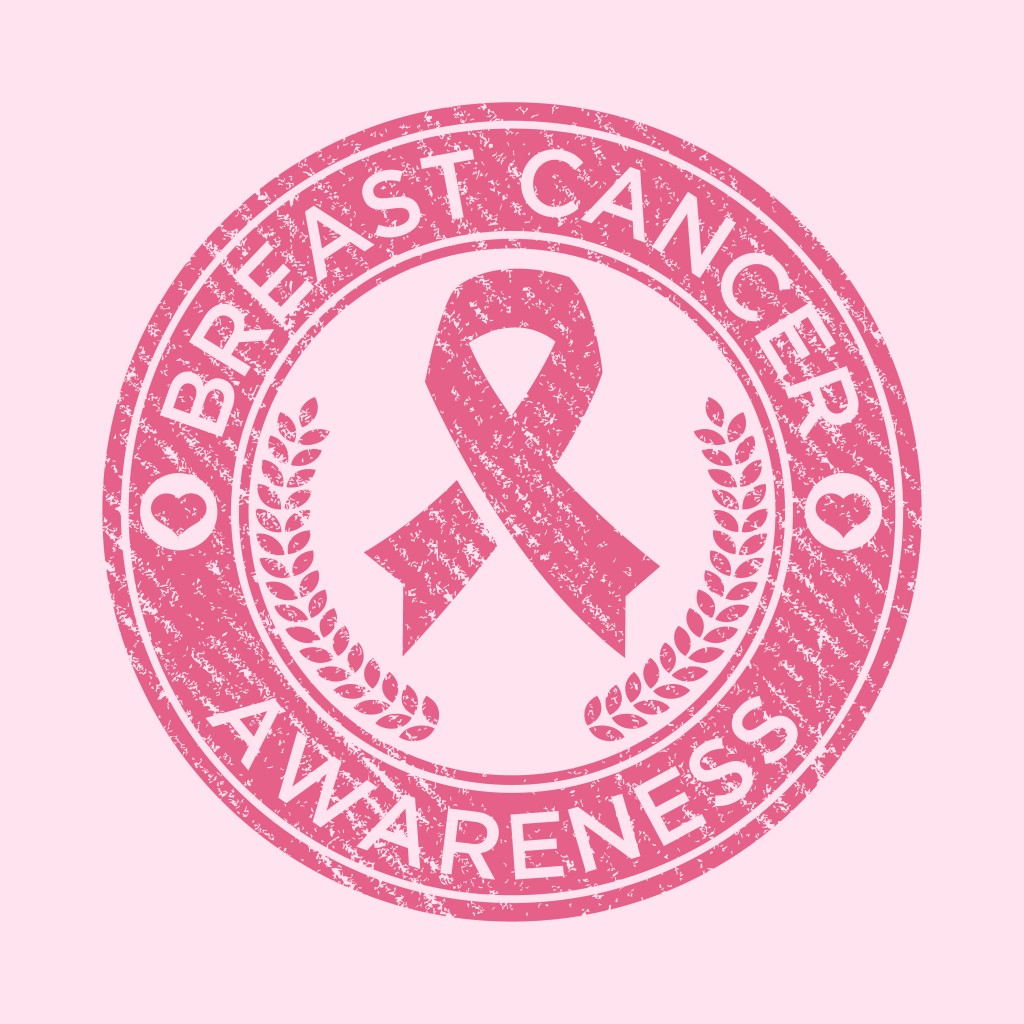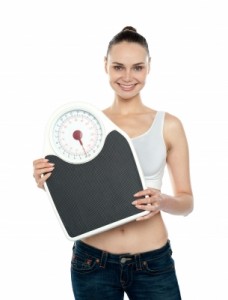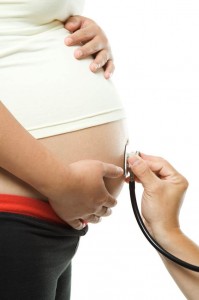 Have you ever had one of those days where everything seems to go wrong? Your car won’t start, it starts to rain and you don’t have an umbrella, you forget your coffee or your lunch or you can’t find your keys… of course you have. We all do! But next time your day starts to go wrong, try one or more of these proven ways to boost your mood and make you feel better instantly.
Have you ever had one of those days where everything seems to go wrong? Your car won’t start, it starts to rain and you don’t have an umbrella, you forget your coffee or your lunch or you can’t find your keys… of course you have. We all do! But next time your day starts to go wrong, try one or more of these proven ways to boost your mood and make you feel better instantly.
- Turn on Some Tunes. Whether on your car radio or your iPod, put on some music and dance or sing along! (yes, you can dance in the car. Carefully.) A 2003 study in the journal Psychology and Education found that people who listened to music of any kind were instantly happier, calmer and more relaxed. If you’re stressed, music can calm your nerves—literally! It’s the music itself—not the lyrics—that affects mood. So listen to something with an upbeat rhythm and melody.
- Do Unto Others. Try doing something nice for others. Buy a cup of coffee for the person behind you in line at the drive-through, donate to a cause or volunteer your time. Spending as little as $5 on someone else can help you experience increased feelings of satisfaction, according to a 2008 study in the journal Science. And when researchers analyzed 37 studies on volunteering, they found that people who offered their time had a better sense of well-being, were happier with their lives and were less likely to feel sad and anxious.
- Get Outside. Even when the weather is lousy, spend at least five minutes outdoors to help chase your blues away. Appreciate the sun, the snow, the rain or wind, whichever you’re experiencing. And if at all possible, take a quick walk. Research has proved that performing a low-intensity workout outside for even just five minutes can raise your self-esteem and mood levels. Take a walk around the block to calm down and get a positive outlook on life.
- Look Through Pictures That Will Make You Smile. Believe it or not, researchers from the United Kingdom found that looking at happy photos beat out chocolate, wine and watching TV when it comes to lifting your mood. Go through your Facebook feed or go through old photo albums to reminisce over happy times in your life.
- Take a Break From the World. Have you ever meditated or done yoga? If not, try! Sometimes, to boost your mood, you just need a quiet place to breathe. And study after study has shown that meditation can ease anxiety and increase positivity in your mood. Regular yoga practitioners have been found to have higher levels of depression-fighting neurotransmitters. Both practices require you to turn off the outside world to focus on your breaths and your thoughts, which may help you rationalize and rebalance after something has thrown you for a loop.
Chouchani, Sayega and Bagnarello MD cares about your overall health including your mental health. If something feels off or not right, please discuss it with us at your next appointment or make an appointment today.
More
 Lumps in the breast or armpit area should always be treated as serious matters. Performing self-exams or having a clinical exam or mammogram performed in a timely manner can lead to early detection and treatment, which can greatly increase chances of survival.
Lumps in the breast or armpit area should always be treated as serious matters. Performing self-exams or having a clinical exam or mammogram performed in a timely manner can lead to early detection and treatment, which can greatly increase chances of survival.
However, lumps in the breast or armpit aren’t always dangerous. Some lumps can be cysts, which may feel like a lump but is actually a small sac filled with fluid. Cysts may appear singularly or in a cluster.
Is it a cyst or tumor?
To determine if a lump is a cyst or a tumor, a healthcare professional will perform an ultrasound. This scan will allow the professional to see if the sac is hollow or filled with fluid, determining if the patient needs any sort of treatment or if the issue will resolve itself on its own.
If the lump is fluid filled, it may not require any treatment, and may also swell and retract based on the hormone cycle of the patient and the patient’s menstrual cycle. If the cyst becomes bothersome, it can be drained by a professional by first applying local anesthetic and then removing the fluid with a needle and syringe. Some cysts will re-fill, requiring them to be removed surgically or simply left alone to recede on their own.
If there is a history of cancer within the family, cysts can act as a risk factor, indicating the possibility of cancer starting in the patient’s body. However, most cysts do not indicate cancer and are almost never associated with a high risk of cancer.
Types of tumors
Breast tumors can be identified as malignant, a mass of cancerous cells that can invade and damage surrounding tissue, or benign, a mass of cells usually unaggressive towards surrounding tissue that will not continue to grow.
A tumor is often biopsied to discover whether it is malignant or benign, or if it needs to be removed from the body before it affects any other areas. Metastatic cancer is when malignant tumors spread to other parts of the body through the lymph nodes, or lymphatic system, and form secondary tumors.
Tumors are classified by grade based on the severity of the cell mutation and the likelihood that it will spread throughout the body. Breast cancer is graded on a scale of one to three with one being the lowest stage of aggression and three being the highest.
Low-grade tumors, ranked at a one, most closely resemble normal tissue, whole high-grade tumors ranked at a three look the least like normal tissue and can be extremely aggressive.
Tumor grading can help best determine a treatment plan, however tumor grades should NOT be confused with stages of cancer.
For more information on stages of breast cancer, search our patient education section of our website or visit the National Breast Cancer Foundation’s page.
More
Did you know that other than the cesarean section, a hysterectomy is the most common surgical procedure performed on women? And what used to be an extremely invasive procedure can now be done robotically through small minor incisions.
What is a hysterectomy?
A hysterectomy is the surgical removal of the uterus.
Here are a few of the most common reasons why a woman would have a hysterectomy:
- Benign fibroid tumors – Non-malignant tumors can grow and become large. This may inflict pressure on other organs. Fibroids can cause heavy bleeding and/or pelvic pain.
- Cancerous tumors – About 10% of hysterectomies are performed to treat cancers such as cervical, ovarian, or endometrial.
- Uterine prolapse – Uterine prolapse occurs when pelvic floor muscles and ligaments stretch and weaken, providing inadequate support for the uterus.
- Endometriosis – When endometrial cells grow outside of the uterus they can attach themselves to other organs and bleed each month. A woman can experience pelvic pain, pain during sex, and prolonged or heavy bleeding.
- Long-term abnormal uterine bleeding
- Chronic pelvic pain
Are you a good candidate?
If you have any of the above conditions or symptoms, it’s important to talk with your doctor. Drs Chouchani, Sayegh and Bagnarello can help you determine the best course of action for your individual needs. It’s important to remember that for women who have not reached menopause, having a hysterectomy means that menstruation will no longer occur, and pregnancy will no longer be possible.
At Chouchani, Sayegh and Bagnarello we perform the Robotic Hysterectomy with the da Vinci®Surgical System. Using this cutting edge technology, we are able to dramatically decrease pain and speed up the recovery process. Through tiny, 1-2 cm incisions, our surgeons using the da Vinci System can operate with greater precision and control, minimizing the pain and risk associated with large incisions while increasing the likelihood of a fast recovery and excellent clinical outcomes.
Find out more about what you should expect before, during and after a robotic hysterectomy.
Are you a candidate for this type of surgery? Find out more about this amazing procedure. Or call our office at (716) 633-6363 for details.
More
 It’s important for women to achieve and maintain a healthy weight, to prevent related medical issues. But what if you’re not at a healthy weight? How can you get there without resorting to dietary fads and potentially dangerous supplements?
It’s important for women to achieve and maintain a healthy weight, to prevent related medical issues. But what if you’re not at a healthy weight? How can you get there without resorting to dietary fads and potentially dangerous supplements?
Losing weight boils down to two things: eating less and moving more. The combination of cutting calories and increasing activity is the only proven way to drop the pounds. Best of all? It’s easy if you know how. Here are 8 simple tips that will help you cut or burn extra calories and lose about a pound of weight a week—without feeling deprived or obsessing about calorie counting.
- Make Smart Food Swaps. If you trade in your morning bagel for an English muffin, you’ll slash 220 calories. Using one whole egg and two egg whites to make an omelet and switching pork sausage for turkey sausage will cut about 125 calories each for a protein-packed breakfast.
- Know How Many Portions You Eat. When you check the calorie count on an item, check the portion size also. Something may be 100 calories a portion, but you may be eating 5 portions at a time. Taking the time to measure out one serving can save you hundreds of calories.
- Make Sure To Move. Do you take a lunch hour? Just taking a walk every day for an hour can burn up to 500 extra calories. Or try wearing a pedometer and aim for walking 10,000 steps a day—the equivalent of about 5 miles—and you’ll burn those calories without hitting the gym.
- Surprise Your Tastebuds. Having a sandwich? Use hummus or mustard instead of mayonnaise, and substitute a roll for sliced bread, and you’ll cut about 200 calories. If you order a side, opt for a salad instead of fries to save another 300 calories and fill up on fiber.
- Fool Your Eyes. If you downsize your plate, such as going from a 12-inch to a 9-inch, you’ll cut 500 calories without feeling deprived.
- Stand Up For Yourself. You can burn up to an extra 500 calories a day by standing, rather than sitting, whenever possible! At work, try standing to make a phone call or read a report.
- Drink Water. Drink plenty of water, especially in place of soda or other sugary drinks, which can save you about 300 hundred calories a day if you skip two cans. Also, drinking enough water daily might boost your metabolism so you burn even more calories. Is plain water too boring? Add sliced cucumbers, lemon or limes, or even low-calorie flavor packets.
- Get Enough Sleep. This can be tough, especially for moms, but people who get less than 6 hours of sleep eat up to 300 calories more during the day because that lack of sleep triggers production of your hunger hormone. Each extra hour of sleep could save you 100 calories!
Call Chouchani, Sayegh and Bagnarello if you’d like to work with doctors who truly care about the overall health of our patients.
More
 It’s International Prenatal Infection Prevention Month, which many of you have probably never heard of.
It’s International Prenatal Infection Prevention Month, which many of you have probably never heard of.
But it’s important to spread the word about some conditions that can cause serious problems for both you and your unborn baby:
Group B Strep
If you are pregnant, you need to know whether you have group B strep. About 25 percent of all women carry the bacteria that can cause group B strep infection. These bacteria are usually not harmful to you and won’t make the people around you sick—but they can be very dangerous for your newborn.
Babies can get very sick and even die if their mothers pass group B strep bacteria to them during childbirth. Ask your healthcare provider for a group B strep test when you are in your third trimester, at around 35 to 37 weeks pregnant. If you test positive, your doctor can give you an antibiotic during labor to prevent the bacteria from spreading to your baby.
Cytomegalovirus (CMV)
A pregnant woman infected with CMV can pass the virus to her baby during pregnancy. Most babies born with CMV infection will be fine, but some may be born with problems such as hearing or vision loss or mental disabilities, or develop issues later on.
How can you avoid getting cytomegalovirus? CMV is passed from infected people to others through body fluids, such as saliva, urine, blood, vaginal secretions and semen, but it doesn’t spread very easily. For pregnant women, the two most common ways they contract CMV is through sexual activity or contact with the saliva and urine of children who already have a CMV infection.
If you’re pregnant and have contact with a CMV-infected child, wash your hands soap and water after changing the child’s diapers, wiping their nose or mouth and touching their toys, pacifier, or other objects. Don’t share food, drinks, eating utensils or a toothbrush with the child and disinfect all toys, countertops or other surfaces that may have the child’s saliva or urine on them.
Listeriosis
Listeriosis is a rare but serious infection caused by eating food contaminated with bacteria called Listeria. Pregnant women are about 10 times more likely than the general population to get listeriosis. Listeriosis during pregnancy can lead to miscarriage, stillbirth, premature delivery or infection in newborns.
To prevent contracting listeriosis, avoid certain foods during pregnancy, such as:
- hot dogs and lunchmeats unless they have been heated/reheated to more than 160 degrees F
- raw (unpasteurized) milk
- soft cheeses such as feta, Brie, Camembert, blue-veined cheeses and Mexican-style cheeses unless they are made from pasteurized milk,
- raw or undercooked seafood, such as sushi or sashimi
- refrigerated pates and meat spreads
- refrigerated smoked seafood.
Pregnant women should also take extra precautions not to get fluid from delicatessen meat or hot dog packages on other foods or food preparation surfaces.
At Chouchani, Sayegh and Bagnarello, we believe an informed patient is a healthy patient—and healthy patients are our goal! To make an appointment with one of our doctors, please call us. We are a top OB-GYN practice in Buffalo.
More
 IUDs are one of the least common forms of birth control in this country—only 2 percent of American women use them—although their success rate is high. Why? Possibly because there is so much misinformation about them.
IUDs are one of the least common forms of birth control in this country—only 2 percent of American women use them—although their success rate is high. Why? Possibly because there is so much misinformation about them.
Basic Information
An IUD, or intra-uterine device, is an object that is placed inside the uterus by a physician. There are three different kinds of IUDs manufactured in the United States today. One type is hormonal and lasts up to five years; the second type delivers a lower dose of hormones and lasts up to three years; and the third uses copper as a spermicide and lasts up to 10 years.
How they work
Non-hormonal IUDs are made from copper, which acts as a natural spermicide. Hormonal IUDs gradually release small doses of synthetic hormones. Both types thicken your cervical mucus, which creates a hostile environment for embryo implantation and prevents pregnancy.
The two main types of IUDs
The two hormonal IUDs are Mirena and Skyla. Mirena lasts up to five years, while Skyla delivers a lower dose of hormones, is slightly smaller, and lasts up to three years.
The copper-coil IUD, ParaGard, slowly releases copper ions for up to 10 years.
IUDs: Busting the Myths
Myth #1: Getting an IUD will make me infertile.
The truth: No, it won’t!
IUDs got a bad rap in the 1970s due to a product called the Dalkon Shield. This plastic IUD’s was badly designed and led to septic miscarriage and even death for some users. IUDs began to be associated with higher risks of infertility and pelvic inflammatory disease.
Doctors know that today’s IUDs do not affect fertility.
Myth #2: IUDs cause infections like Pelvic Inflammatory Disease (PID).
The truth: No, they don’t!
Although IUDs do not protect against sexually transmitted infections (STIs), they can’t cause them. This fear came about due to the lack of rigorous STI testing in previous decades. People would get an STI—or have one prior to the IUD’s insertion—then blame the infection on the device. You still cannot get an IUD if you already have an STI. If your STI status is negative, getting an IUD is extremely unlikely to cause any kind of infection.
Myth #3: IUDs are really expensive.
The truth: IUDs are cheaper than pills in the long run—but must be paid for up front.
It’s hard to estimate what your IUD might cost because there are so many factors, the most significant one being insurance coverage. But research has shown that out of five popular contraceptives, IUDs are the cheapest over five years for both insured and uninsured users.
Is an IUD the right method for you?
Birth control is not one size fits all. Your age, health and other factors come into play. If you would like to discuss your options, please call Chouchani, Sayegh and Bagnarello. We always work with our patients to create the most successful course of care!
More
By admin
13 Jan, 2014
Pregnancy, Women's Health
calcium when pregnant, Dr. Adel Chouchani, Dr. Carola Bagnarello, Dr. Christian Chouchani, Dr. Gabriel Chouchani, Dr. Magdi Sayegh, how much calcium do I need, WNY OB-GYN, women and calcium, women's calcium intake
 Calcium is the most abundant mineral in your body, but you also lose it every day through your skin, nails, hair, sweat, urine and feces—and our bodies cannot produce new calcium on their own. If you don’t get enough for your body’s needs, calcium is taken from your bones, causing osteoporosis.
Calcium is the most abundant mineral in your body, but you also lose it every day through your skin, nails, hair, sweat, urine and feces—and our bodies cannot produce new calcium on their own. If you don’t get enough for your body’s needs, calcium is taken from your bones, causing osteoporosis.
Calcium plays many vital roles in your body, including:
- building healthy bones and teeth and keeping them strong as you age,
- sending messages through the nervous system,
- maintaining healthy blood vessels,
- regulating blood pressure,
- preventing insulin resistance (which could lead to Type 2 diabetes),
- helping your blood clot, and
- regulating your heart’s rhythm.
Obviously, if you want to enjoy good health, you need to make sure you have enough calcium in your diet. And once you understand the basics, it’s not that hard to include it in your diet and get the calcium you need.
Supplements vs. Food
Your body can absorb more calcium from food than it can from supplements, so your calcium intake should come primarily from the food you eat. People who get most of their calcium from food have stronger bones.
Calcium from food often comes with other beneficial nutrients that help calcium do its job, like Vitamin D.
Doctors advise that you get as much of your daily calcium needs from food as possible and use supplements only to make up any shortfall. Older women who get high amounts of calcium from supplements seem to have a higher risk of kidney stones and strokes. And using high-dose calcium supplements may increase your risk of heart disease.
How much calcium is right for you?
The healthiest or safest amount of dietary calcium hasn’t been definitively established. Different scientific approaches have yielded different estimates. To ensure that 95 percent of the population gets this much calcium, the National Academy of Sciences established the following recommended intake levels:
- Age 19 to 50: 1,000 milligrams/day
- Age 50 or over: 1,200 milligrams/day
- Pregnant or lactating adult women 1,000 milligrams/day
Good food sources of calcium
So what foods can you eat to get enough calcium in your diet? You probably know about dairy products, like milk, yogurt, and cheese, but here are some unexpected sources:
- White Beans
- Canned Salmon
- Sardines
- Dried Figs
- Bok Choy
- Blackstrap Molasses
- Kale
- Black-eyed Peas
- Almonds
- Oranges
- Turnip Greens
- Sesame Seeds
- Seaweed
At Chouchani, Sayegh and Bagnarello, we believe in supporting the total health of our patients and our community. If you have any questions about your dietary or nutritional needs, we’d be happy to help. Contact us anytime at any of our three convenient WNY locations.
More
By admin
15 Dec, 2013
Breast health, Women's Health
breast self-exam, check your breasts every month, Dr. Adel Chouchani, Dr. Carola Bagnarello, Dr. Christian Chouchani, Dr. Gabriel Chouchani, Dr. Magdi Sayegh, is breast self-exam important?, the benefits of breast self-exam, WNY OB-GYN
 You probably mean to do your breast self-exam (BSE) every month, but it often slips your mind, right? Or maybe you’ve heard that some people don’t think BSE is helpful in detecting breast cancer early and increasing the likelihood of survival. But experts still believe that BSE is a useful and essential screening strategy, especially in conjunction with regular physical exams by a doctor and mammography. Why?
You probably mean to do your breast self-exam (BSE) every month, but it often slips your mind, right? Or maybe you’ve heard that some people don’t think BSE is helpful in detecting breast cancer early and increasing the likelihood of survival. But experts still believe that BSE is a useful and essential screening strategy, especially in conjunction with regular physical exams by a doctor and mammography. Why?
Sure, there are statistics that say things like:
- About 20% of the time, breast cancers are found by physical examination rather than by mammography
- Nine out of 10 breast masses are detected through BSE.
But put aside the numbers and the science. The point is, in order to keep yourself healthy, you need to know your body better than anyone else! And being proactive with your health means doing whatever you can to lower your chances of developing breast cancer—which includes making sure that if breast cancer does develop it is caught early, in a treatable stage. With early detection and treatment, the five-year survival rate for breast cancer soars to more than 90%. Plus, performing your monthly BSE will help to determine what is normal for your breasts, and help you recognize a change.
The experience can be frustrating—for example, you may feel things but not know what they mean. But the more often you do it, the more you’ll learn about your own breasts and what’s normal for them, and the easier it will be for you to tell if something different or unusual is going on.
Perform your BSE 6 days after your period or on the first day of the month, if you no longer have periods. Remember that everyone’s breasts are different, and that any changes you see or feel can be related to aging, your menstrual cycle, pregnancy, menopause or hormone use. Regular BSE will help to identify changes that require further evaluation and possible treatment.
What should you look for?
- Lumps, hard knots or thickening in the breast or underarm area
- Unusual swelling, warmth, redness or darkening that does not go away
- Change in the size or shape of your breast
- Dimpling or puckering of the skin
- An itch, scaly sore or rash on the nipple
- Pulling in of the nipple or other parts of the breast
- Nipple discharge that starts suddenly or is bloody
- Pain that is localized in one area and that does not vary with your monthly cycle
Nobody wants to think about getting cancer. But the fact is, taking the time to check yourself out is your best defense when it comes to caring for your health. If you have any questions about how to perform your BSE, ask your doctor – or call Chouchani, Sayegh and Bagnarello, MD. We’d be happy to offer any help you need.
Photo courtesy of freedigitalphotos.net.
More
By admin
13 Dec, 2013
Women's Health
Dr. Adel Chouchani, Dr. Carola Bagnarello, Dr. Christian Chouchani, Dr. Gabriel Chouchani, Dr. Magdi Sayegh, how to avoid the winter blues, Vitamin D supplements in the winter, why Vitamin D supplements are important, winter blues in Western New York, WNY OB-GYN, women's health tips
 Medical professionals have known for decades that everyone’s vitamin D levels drop in the wintertime, especially those who live in the northern part of the country. Why is it a problem? Because vitamin D deficiency is connected with several health issues, especially anxiety and depression, and you may need to take extra action to keep your vitamin D levels high enough, and steady.
Medical professionals have known for decades that everyone’s vitamin D levels drop in the wintertime, especially those who live in the northern part of the country. Why is it a problem? Because vitamin D deficiency is connected with several health issues, especially anxiety and depression, and you may need to take extra action to keep your vitamin D levels high enough, and steady.
Vitamin D helps your body use calcium to build and maintain strong bones. It may also increase muscle strength to help prevent falls and broken bones as you age. And low levels of vitamin D have been linked with high blood pressure, diabetes, hypothyroidism, arthritis, and cancer.
Then there’s seasonal affective disorder (SAD), a type of depression that occurs during the winter months, when there’s not much sunlight. Vitamin D deficiency can actually cause depression year-round.
Why is it so hard to get enough vitamin D in the winter? Mostly because of the lack of sun.
Your body gets vitamin D from three places: sunlight, food and supplements. Your body makes Vitamin D when your skin is exposed to the ultraviolet light (UVB rays) from the sun. During Western New York’s snowy, often overcast winter days, you won’t get enough UVB rays to make enough vitamin D. And the foods where vitamin D is found—cod liver oil, fatty fish like salmon, mackerel, sardines, herring and tuna and eggs—are often high in fat and low in popularity. It’s no wonder most of us need to supplement!
How much should you take? If your doctor has tested your vitamin D levels and found them to be too low, he or she may prescribe a very high level supplement to be taken for a short period of time. After that time, a maintenance dose should suffice.
It’s been proven that women who take supplements in winter are able to significantly elevate their vitamin D levels compared to those who don’t take supplements. It’s yet another way you can take care of yourself and your health, something that the doctors at Chouchani, Sayegh and Bagnarello encourage. Please make an appointment with us if you have any health concerns you feel we can help you with!
More
 What if your doctor tells you you’re considered a high-risk pregnancy? What does that mean, and what can you do about it?
What if your doctor tells you you’re considered a high-risk pregnancy? What does that mean, and what can you do about it?
Being called “high-risk” may sound scary, but it’s just a way for doctors to ensure that you get special attention during your pregnancy. It usually means that you or your baby has an increased chance of a health problem—not that you or the baby will definitely have one.
What kind of conditions will put you in the high-risk category?
- You have a health problem such as diabetes, cancer, high blood pressure, kidney disease, heart valve problems, sickle cell disease, asthma, lupus, rheumatoid arthritis or epilepsy
- You smoke or use alcohol or illegal drugs
- You are younger than 17 or older than 35
- You are pregnant with more than one baby
- You’ve had three or more miscarriages
- Your baby has a genetic condition, such as Down syndrome, or a heart, lung, or kidney problem
- You’ve had past problems such as preterm labor, preeclampsia or eclampsia
- You’ve already had a baby with a genetic condition
- You have an infection, such as HIV, hepatitis C, cytomegalovirus (CMV), chicken pox, rubella, toxoplasmosis or syphilis
Will my doctor treat me differently for a high-risk pregnancy?
You’ll have more regularly scheduled visits to the doctor, and you may have more ultrasound tests to keep an eye on your baby’s growth. Genetic testing may also be done, especially if you are 35 or older or had a genetic issue in a past pregnancy.
Can a pregnancy become high risk later?
Yes. Sometimes a medical condition develops during pregnancy for either mom or baby causes a pregnancy to become high risk. Some complications include:
- problems with the uterus, cervix or placenta
- severe morning sickness
- too much amniotic fluid
- too little amniotic fluid
- Rh (rhesus) sensitization, which can occur if your blood type is Rh negative and your baby’s blood type is Rh positive
What can I do to stay healthy during a high-risk pregnancy?
- Seek regular prenatal care so your health care provider can monitor your health and your baby’s. Visit a specialist in maternal-fetal medicine, genetics, pediatrics or other areas if necessary.
- Establish a good relationship with your doctor and with other doctors in the practice. You’ll want to feel comfortable discussing any concerns you might have and know that any of them can treat you if necessary.
- Eat a healthy diet. A daily prenatal vitamin can help fill any gaps. Consult your health care provider if you have special nutrition needs due to a health condition, such as diabetes.
- Gain weight wisely. Work with your health care provider to determine what’s right for you.
- Avoid risky substances. If you smoke, drink alcohol or do illegal drugs—quit. But get your health care provider’s OK before you start or stop taking any medications or supplements.
- Talk to your doctor about any health problems you have and any medications you are taking.
At Chouchani, Sayegh and Bagnarello, we pride ourselves on providing personal and friendly care to each and every patient. If you have any questions or concerns about your pregnancy or your prenatal or postnatal health, call us any time at 716.633.6363.
Disclaimer: The medical information provided in this article is of a general nature and cannot substitute for the advice of a medical professional.
More
 Have you ever had one of those days where everything seems to go wrong? Your car won’t start, it starts to rain and you don’t have an umbrella, you forget your coffee or your lunch or you can’t find your keys… of course you have. We all do! But next time your day starts to go wrong, try one or more of these proven ways to boost your mood and make you feel better instantly.
Have you ever had one of those days where everything seems to go wrong? Your car won’t start, it starts to rain and you don’t have an umbrella, you forget your coffee or your lunch or you can’t find your keys… of course you have. We all do! But next time your day starts to go wrong, try one or more of these proven ways to boost your mood and make you feel better instantly.







